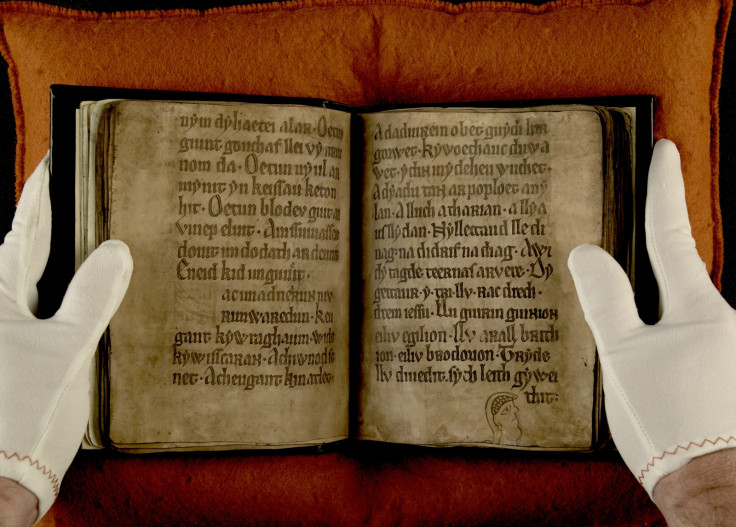Ghost faces and secret verse discovered in ancient King Arthur manuscript
Ghostly faces and a secret verse have been discovered in an ancient medieval manuscript containing the earliest references to King Arthur and Merlin.
The Black Book of Carmarthen dates to 1250 and is the earliest surviving medieval manuscript written in Welsh.
It is a collection of poetry from between the ninth and 12<sup>th century, drawing on traditions of Welsh folk-heroes and legends from the Dark Ages.
However, researchers at the University of Cambridge have uncovered details hidden in the book that had been erased from history, finding doodles, marginalia and an additional verse.

The Black Book of Carmarthen
The book is named because of the colour of its binding. It is thought it was the work of a single scribe who collected and recorded stories and poems over a long period of his life – reflected in the breadth of genres included.
One poem involves the adventures of Arthur, with the famed king trying to find the entrance to a court. In another, the Stanzas of the Graves, a narrator claims to know the burial places of 80 warriors.It also refers to Merlin twice, with the book opening with a dialogue between the wizard and Welsh poet Taliesin.
The team found these details while studying the text with ultraviolet light and photo editing software. They believe a previous owner, called Jaspar Gryffyth, erased the text after it changed hands.
Researcher Myriah Williams said: "It's easy to think we know all we can know about a manuscript like the Black Book but to see these ghosts from the past brought back to life in front of our eyes has been incredibly exciting. The drawings and verse that we're in the process of recovering demonstrate the value of giving these books another look."

"The margins of manuscripts often contain medieval and early modern reactions to the text, and these can cast light on what our ancestors thought about what they were reading. The Black Book was particularly heavily annotated before the end of the 16th century, and the recovery of erasure has much to tell us about what was already there and can change our understanding of it."
The researchers also said their findings might only be the "tip of the iceberg" in terms of what could be uncovered using these imaging techniques.
© Copyright IBTimes 2024. All rights reserved.






